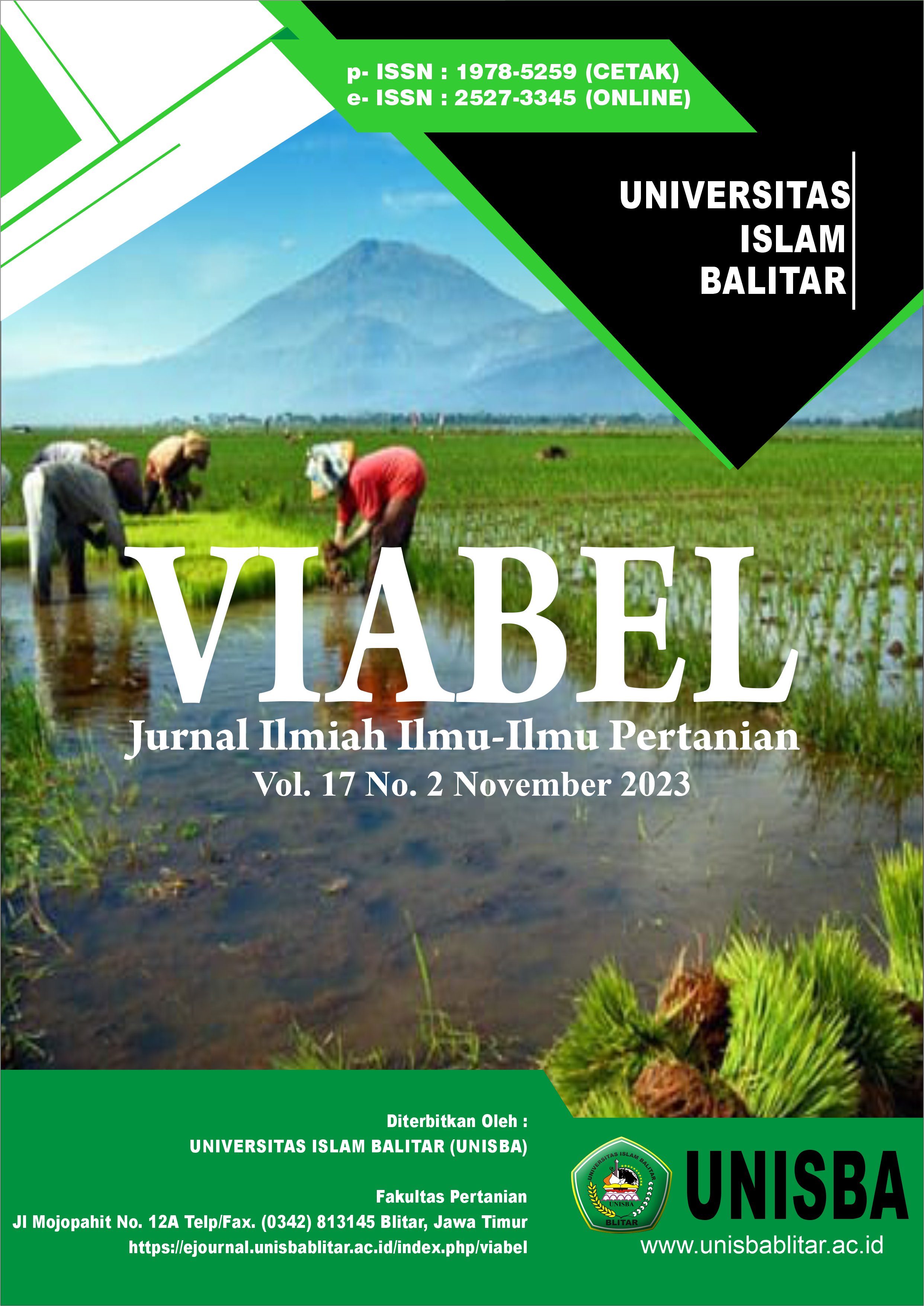STRATEGI PENGEMBANGAN PEMASARAN BERAS ORGANIK DI VIGUR ORGANIK CEMOROKANDANG MALANG
DOI:
https://doi.org/10.35457/viabel.v17i2.3343Keywords:
: Strategy, Marketing, Rice, OrganicAbstract
Rice is a basic need of society that must be met. With increasing awareness of a healthy lifestyle, many people are switching from non-organik rice to organik rice for various other reasons. The aim of this research is to determine the marketing development strategy for organik rice in Vigur Organic Cemorokandang, Malang City. The data collection method uses primary and secondary data, while the data analysis method used in this research is the SWOT analysis method. The results of this research show that the SWOT analysis of Vigur Organic in Cemorokandang, Malang City has the highest score of 3.72 which is in the first quadrant, which means it supports the strength - opportunity (SO) strategy. This strategy is a strategy that utilizes strengths in order to obtain as many opportunities as possible in carrying out marketing strategies. Strength - opportunity (SO) strategy by expanding the partnership or cooperation network and expanding marketing reach by utilizing advances in information technology for promotions so as to increase sales of organik rice branded VI-O Organic. The second highest strategy with a score of 3.14 is in the third quadrant, namely weakness-threats (W-T) by maintaining the good quality of organik rice and including a halal logo to maintain safety, which is expected to increase consumer loyalty from competitors.
Downloads
References
Arikunto, S. (2019). Prosedur Penelitian. Jakarta: Rineka cipta.
Elfrida, Norah. (2013). Tingkat Konsumsi dan Pola Konsumsi Beras Masyarakat di Kota Medan.
Sarr, T. (2014). Ini Dia Buah,Sayur Dan Herbal Beracun!. Trans idea Publishing. Jogjakarta
Setiawan, A., Zakaria, W. A., & Indriani, Y. (2016). Perilaku konsumen dalam pembelian beras organik produksi Kabupaten Pringsewu. Jurnal Ilmu Ilmu Agribisnis: Journal of Agribusiness Science, 4(2).
Suswadi.,Sutarno.,R D Kartikasari., & Heriyanto. (2019). Kajian Karateristik dan Tingkat Efisiensi Usaha Tani Padi Organik. Fakultas Pertanian. Universitas Tunas Pembangunan Surakarta. Diunggah dalam Hijau Cendekia.
http://ejournal.uniskakadiri.ac.id/index.php/HijauCendekia.
Thøgersen, J., Jørgensen, A-K., & Sandager, S. (2017). Consumer decision making regarding a "green" everyday product. Psychology & Marketing, 29(4), 187- 197. doi: 10.1002/mar.20514.
Uma Sekaran. (2017). Metode Penelitian untuk Bisnis. Jakarta: Salemba Empat.
Umi Narimawati. (2018). Metodologi Penelitian Kualitatif dan Kuantitatif, Teori dan Aplikasi. Bandung: Agung Media.
Yuhanin, Z., Djoko, K., & Budi, S. (2019). Consumer characteristics related to willingness to pay for organik rice. Russian Journal of Agricultural and Socio-Economic Sciences, 89(5), 76-84.
Zamrodah, Y., Koestiono, D., Setiawan, B., & Syafrial, S. (2020). Effect of lifestyle, egoistic values and biosphere values on Willingness to pay (WTP) organik rice. EM International, 26, 18-25.
Downloads
Published
Issue
Section
License
Copyright (c) 2023 VIABEL: Jurnal Ilmiah Ilmu-Ilmu Pertanian

This work is licensed under a Creative Commons Attribution-ShareAlike 4.0 International License.
Authors who publish with this journal agree to the following terms:
- Copyright on any article is retained by the author(s).
- The author grants the journal, right of first publication with the work simultaneously licensed under a Creative Commons Attribution License that allows others to share the work with an acknowledgment of the work’s authorship and initial publication in this journal.
- Authors are able to enter into separate, additional contractual arrangements for the non-exclusive distribution of the journal’s published version of the work (e.g., post it to an institutional repository or publish it in a book), with an acknowledgment of its initial publication in this journal.
- Authors are permitted and encouraged to post their work online (e.g., in institutional repositories or on their website) prior to and during the submission process, as it can lead to productive exchanges, as well as earlier and greater citation of published work.
- The article and any associated published material is distributed under the Creative Commons Attribution-ShareAlike 4.0 International License










.png)




